Choosing the right platform for your business can significantly impact how you build your audience and grow your revenue. In this comparison, we’ll explore ConvertKit vs ClickFunnels, diving into their features, ease of use, automation capabilities, pricing, and more. By the end of this guide, you’ll know which platform best fits your needs.
Table of Contents
1. Overview of ConvertKit and ClickFunnels
ConvertKit and ClickFunnels are both powerful marketing tools, but they serve different purposes:
- ConvertKit: Aimed at creators like bloggers, YouTubers, and podcasters, ConvertKit is primarily an email marketing tool that helps build and nurture email lists. It excels at automation, segmentation, and delivering personalized email campaigns.
- ClickFunnels: Designed for entrepreneurs and marketers, ClickFunnels is a comprehensive sales funnel builder. It allows users to create high-converting sales funnels with landing pages, payment integration, and upsell options, all in one platform.
While ConvertKit focuses on nurturing relationships via email, ClickFunnels is all about driving conversions and sales through optimized funnels.

2. Features and Functionality
When comparing ConvertKit vs ClickFunnels, it’s clear that both platforms offer distinct features that cater to different needs.
- ConvertKit Features:
- Email marketing with advanced segmentation.
- Visual automation builder for email sequences.
- Simple landing pages and sign-up forms.
- Audience tagging to personalize content.
- ClickFunnels Features:
- Drag-and-drop funnel builder for creating landing pages, sales pages, and checkout forms.
- Integrated payment gateways like Stripe and PayPal.
- Pre-built funnel templates designed for conversion.
- A/B testing and analytics to optimize funnel performance.
If your focus is on creating and nurturing an email list, ConvertKit is ideal. For building high-converting sales funnels, ClickFunnels is the better option.
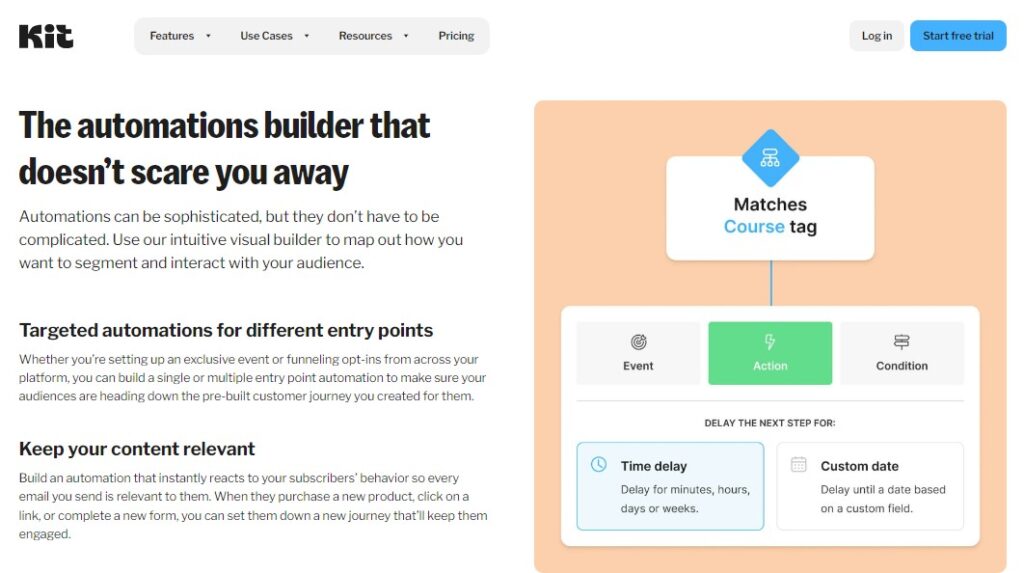
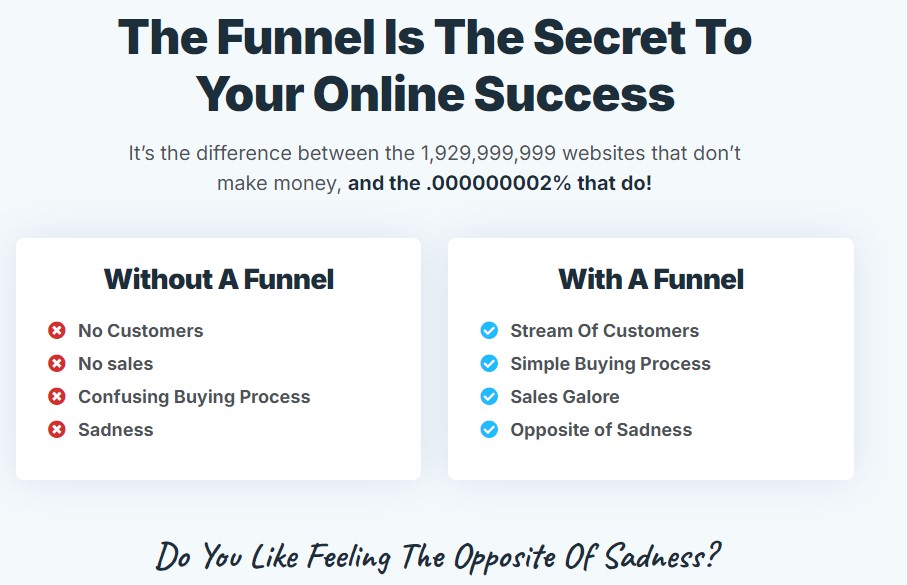
3. Ease of Use
Both ConvertKit and ClickFunnels are user-friendly, but they cater to different types of users.
- ConvertKit is designed with simplicity in mind, making it easy for non-tech-savvy users to set up email campaigns and automations. The interface is clean and straightforward, allowing users to quickly get started with minimal friction.
- ClickFunnels, while easy to use for sales funnel creation, has a more complex interface due to the range of features it offers. Users need to familiarize themselves with building funnels, setting up payment gateways, and optimizing conversion paths, which may involve a learning curve.
If you’re a beginner looking to get started quickly with email marketing, ConvertKit is the simpler tool. ClickFunnels is best suited for those willing to invest time into learning how to build and optimize funnels.
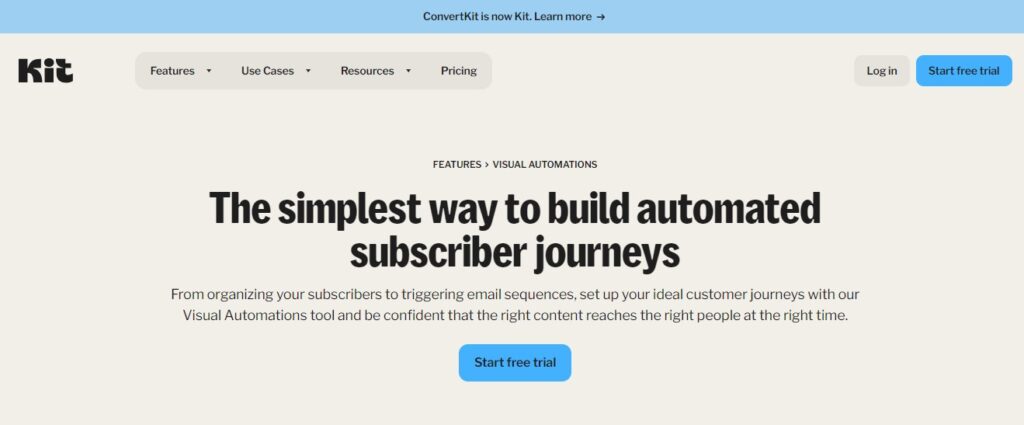

4. Marketing and Sales Automation
Automation is crucial in modern marketing, and both platforms shine in different ways.
- ConvertKit: Its visual automation builder allows users to create email sequences based on user actions like form submissions or clicks. You can easily segment and tag subscribers, sending them personalized content based on their preferences or behavior.
- ClickFunnels: While ClickFunnels doesn’t focus as much on email automation, it excels in funnel automation. You can create complex sales funnels with upsells, downsells, and follow-up funnels to automatically move customers through the sales process.
For email marketing automation, ConvertKit is the superior option. For automating the entire customer journey through a sales funnel, ClickFunnels is unmatched.

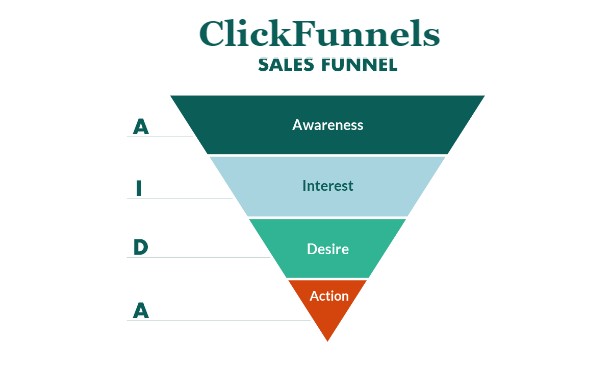
5. Integrations and Compatibility
Both platforms integrate with various tools, but they each have strengths.
- ConvertKit integrates seamlessly with content creation tools like WordPress, Teachable, and Shopify. It also offers direct integrations with e-commerce platforms and webinar software, making it a good choice for creators who want to streamline their content distribution.
- ClickFunnels offers deeper integrations with payment gateways, webinar platforms, and CRM tools like Salesforce and HubSpot. If you’re selling products or running complex marketing campaigns, ClickFunnels gives you more flexibility in integrating various tools into your funnel.
If you’re a content creator, ConvertKit’s integrations are more aligned with your needs. For sales-driven businesses, ClickFunnels offers better compatibility with payment and CRM tools.
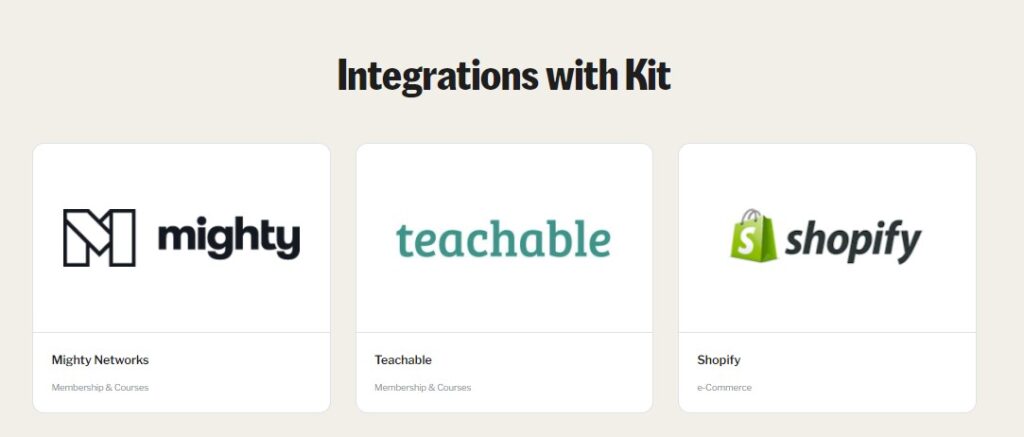
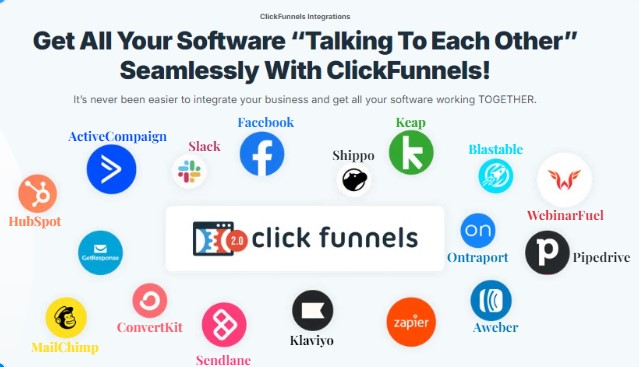
6. Pricing and Plans
When comparing ConvertKit vs ClickFunnels on pricing, it’s clear that both platforms cater to different budgets.
- ConvertKit Pricing: ConvertKit offers a free plan for up to 1,000 subscribers, making it accessible for beginners. Paid plans start at $29/month, with features like automation, visual workflows, and advanced reporting included.
- ClickFunnels Pricing: ClickFunnels starts at $97/month, and its premium plan is priced at $297/month. This higher cost reflects the more advanced functionality, such as sales funnels, membership sites, and affiliate management.
For users primarily focused on email marketing and who want a cost-effective solution, ConvertKit is the more budget-friendly option. If you need the robust sales funnel tools that ClickFunnels offers, the higher price may be worth the investment.
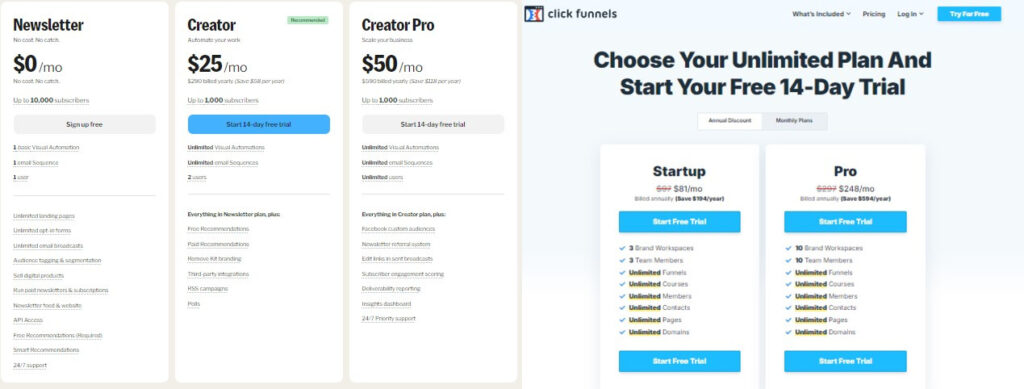
7. Customer Support and Community
Both platforms offer solid customer support, but their focus areas differ.
- ConvertKit provides email support, live chat, and a well-documented knowledge base. It also has an active community of creators who share tips and tutorials on how to maximize the platform.
- ClickFunnels offers 24/7 customer support via live chat and email, but it also has a unique feature: FunnelFlix. This is a video training library that teaches you how to use the platform effectively. The ClickFunnels community is also very active, with events and webinars designed to help users grow their business.
If you need ongoing education and training for complex funnels, ClickFunnels’ support is more in-depth. For basic email marketing queries, ConvertKit’s customer support is quick and effective.

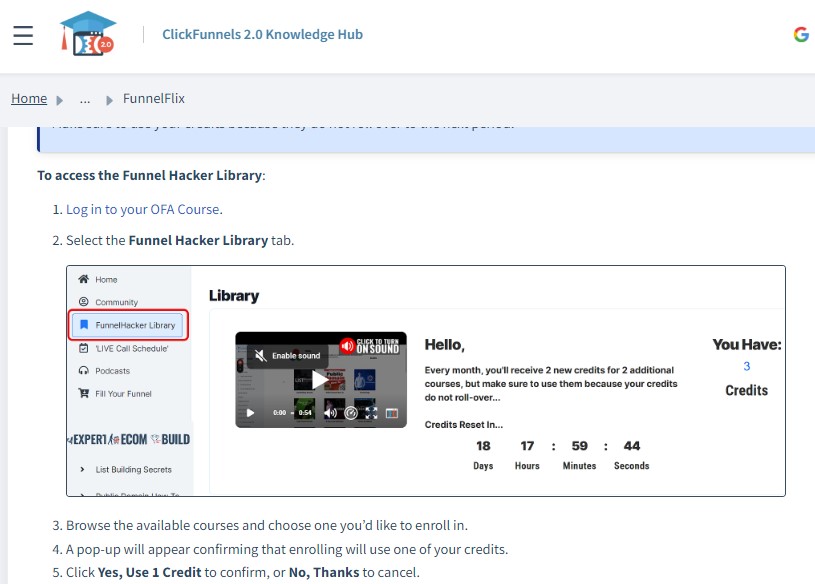
Who Should Use ConvertKit vs ClickFunnels?
Finally, let’s break down who would benefit most from each platform.
- ConvertKit: Best for creators, bloggers, and small businesses that want to grow their audience through email marketing and simple automation. It’s ideal for content-focused businesses that don’t need complex sales funnels.
- ClickFunnels: Perfect for entrepreneurs, marketers, and e-commerce businesses looking to scale with sales funnels. If you need landing pages, checkout flows, and upsells, ClickFunnels is the better option.
Conclusion: ConvertKit vs ClickFunnels – Which Should You Choose?
The decision between ConvertKit vs ClickFunnels depends on your specific business needs. If you’re a content creator looking for an easy-to-use email marketing platform, ConvertKit is your best choice. On the other hand, if you’re focused on driving sales through advanced funnels, ClickFunnels is worth the investment. By understanding the strengths and weaknesses of each platform, you can choose the one that aligns best with your business goals.




Thanks for sharing. I read many of your blog posts, cool, your blog is very good.